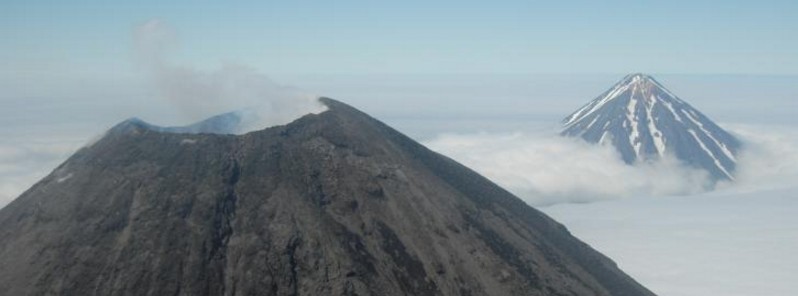Short-lived eruption at Cleveland volcano, Alaska

A short-lived explosion was detected in seismic and infrasound data at Cleveland volcano at 03:38 UTC on May 17, 2017. The increase in seismicity lasted about 10 minutes.
The ash cloud was observed in satellite data drifting to the southwest for approximately 5 hours. The dome at the summit of the volcano that was emplaced in April-May, 2017 has been completely removed by this explosion.
Satellite views since the event show no evidence of an ash plume above the weather cloud tops at 3 km (10 000 feet) above sea level, and a pilot report indicated no plume.
Cleveland volcano is monitored with a limited real-time seismic network, which inhibits AVO's ability to detect precursory unrest that may lead to an explosive eruption. Rapid detection of an ash-producing eruption may be possible using a combination of seismic, infrasound, lightning, and satellite data.
Current Volcano Alert Level is Watch, the Aviation Color Code is Orange.
The last eruption of this volcano took place at 08:15 UTC on March 24, 2017. At the time, cloud cover at 9.1 km (30 000 ft) a.s.l. obscured satellite observations of the volcano, and no ash cloud was observed.
Geological summary
Beautifully symmetrical Mount Cleveland stratovolcano is situated at the western end of the uninhabited, dumbbell-shaped Chuginadak Island. It lies SE across Carlisle Pass strait from Carlisle volcano and NE across Chuginadak Pass strait from Herbert volcano.
Cleveland is joined to the rest of Chuginadak Island by a low isthmus. The 1730-m-high Mount Cleveland is the highest of the Islands of the Four Mountains group and is one of the most active of the Aleutian Islands. The native name for Mount Cleveland, Chuginadak, refers to the Aleut goddess of fire, who was thought to reside on the volcano.
Numerous large lava flows descend the steep-sided flanks. It is possible that some 18th-to-19th century eruptions attributed to Carlisle should be ascribed to Cleveland (Miller et al., 1998).
In 1944 Cleveland produced the only known fatality from an Aleutian eruption. Recent eruptions have been characterized by short-lived explosive ash emissions, at times accompanied by lava fountaining and lava flows down the flanks. (GVP)
Featured image: Aerial view of Cleveland's summit crater with Carlisle in the background on July 25, 2016. Credit Taryn Lopez AVO/UAF-GI

Commenting rules and guidelines
We value the thoughts and opinions of our readers and welcome healthy discussions on our website. In order to maintain a respectful and positive community, we ask that all commenters follow these rules.